Business is booming for Australia's cinemas. 2008 was a record-breaking year at the box office, and international festivals run annually in the major cities. Yet, despite successes as diverse as Lantana, Wolf Creek, Muriel's Wedding and Priscilla Queen of the Desert, just 33 home-grown films were released last year – fewer even than in 1911. Three decades ago, the New Australian Cinema was one of the most exciting national movements in the world, thanks to work like Picnic at Hanging Rock, Mad Max and My Brilliant Career. Today Oz films are struggling. Could it be that - rather like the country's wine - the best vintages simply don't travel?
"The question of national identity is central to the general confusion that dominates film-making here," explains Ruth Hessey, the film critic for ABC's Radio National. "Who are we? Honorary Americans living on the last frontier of the wild west, or unique art house auteurs like the New Zealanders?" It's a sensitive issue, and one the Australian film industry is forced to address anew each year as it juggles the demands of a notoriously reluctant home-grown audience with an increasingly competitive international English-language market.
While working as an arts and film critic in Sydney two years ago, I was introduced to the concept of "cultural cringe" – a term, significantly, coined by an Australian. The urge to belittle national culture, so stiflingly prevalent in the 1970s and 1980s, has largely died out in the thriving national literary, theatre and music scenes, but its shadow still lingers in the knee-jerk reactions of the cinema-going public. Given a choice between an American and an Australian film, most Australians will reliably choose the American option. Not because it’s better, but because it’s international.
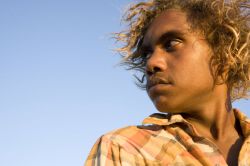 You can find out more about all this at the Barbican, which hosts the annual London Australian Film Festival (LAFF), now in its 16th year. Alongside the year's best features, documentaries and shorts, LAFF has two strands playing to Australia's current cinematic strengths, the polar genres of horror and comedy. Opening the festival on Thursday is Samson and Delilah, starring Rowan McNamara (pictured right), by the indigenous director Warwick Thornton (it is released here nationwide on 2 April). The winner of last year's Caméra d'Or for Best First Feature at Cannes, it has bucked recent trends in Australian film, achieving substantial success both nationally and internationally.
You can find out more about all this at the Barbican, which hosts the annual London Australian Film Festival (LAFF), now in its 16th year. Alongside the year's best features, documentaries and shorts, LAFF has two strands playing to Australia's current cinematic strengths, the polar genres of horror and comedy. Opening the festival on Thursday is Samson and Delilah, starring Rowan McNamara (pictured right), by the indigenous director Warwick Thornton (it is released here nationwide on 2 April). The winner of last year's Caméra d'Or for Best First Feature at Cannes, it has bucked recent trends in Australian film, achieving substantial success both nationally and internationally.
Made on a budget of just $AU1.2million (£600,000), its pared-down love story - "a love story about survival, not Hollywood style love," according to its producer Kath Shelper - seems to have pulled off the ultimate coup: endowing an inescapably and specifically Australian story with an emotional trajectory that plays as powerfully to the festival-going elite as it does to local audiences back home. "Warwick always talks about Samson and Delilah as an Australian film about Australian characters," Shelper explains, "but in the end we just wanted to make a beautiful love story and I think that is what has connected with people across the world."
The story of two Aboriginal teenagers and their struggle to find a home and place to belong, the film is by no means an easy watch. The fragile beauty of the cinematography (also the work of Thornton) and delicately wrought love story only heighten the vicious banality of the drug-abuse and violence that punctuate the narrative. Short on dialogue and long on visuals, it's a film that trusts in the intelligence of its viewers. Rather like the pointillist Aboriginal dot paintings that Delilah and her grandmother produce, the film offers up a series of isolated images - a public telephone rings, unanswered, in the middle of the desert; a girl pushes her grandmother in an old wheelchair, jerkily inching their way across the flat red expanse of outback - and it is the viewer who must step back and view the whole coherent canvas.
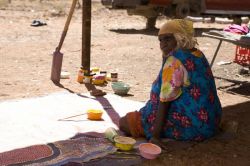 Although she and Thornton have succeeded where others have failed, Shelper is aware of the difficulties facing her national industry. "Do we try to compete with American and UK films in the English-language sector and aim to make films that will play to broad audiences? Or do we just do our thing and make what we feel passionate about and trust that people will come?"
Although she and Thornton have succeeded where others have failed, Shelper is aware of the difficulties facing her national industry. "Do we try to compete with American and UK films in the English-language sector and aim to make films that will play to broad audiences? Or do we just do our thing and make what we feel passionate about and trust that people will come?"
Speaking to Australian film-makers, it's hard to avoid the sense of resentment towards national audiences and their distinctly unpatriotic approach to Australian film. Hessey explains: "Unlike France where the population will attend anything made in French, Australians don't generally rate Australian films. The two most successful box office hits recently – Kenny and Samson and Delilah – offer no clues as to the magic ingredient that produces a hit. One was a broad comedy about a man running a Portaloo company, and the other was a bleak poetic comment on the state of the indigenous population."
Such diversity is reflected in this year's festival offerings. Made by Safina Uberoi, A Good Man is a deliberately rustic documentary, part tragedy, part love story and part absurdist farce. When farming failed to pay the bills, Chris and his quadriplegic wife Rachel decided to set up a legal brothel in the conservative New South Wales town of Inverell (population 1100). The film charts the building of the brothel from scratch, the hiring of staff ("Everyone's dream is to be a Madam in a brand new parlour like this; it feels like home"), and eventually the collapse of the project. It's the relationship between Chris and Rachel that dominates the film, underpinning the action which, for all its potentially salacious implications, is revealed simply as the unorthodox product of a "good" man trying to do the best for his family.
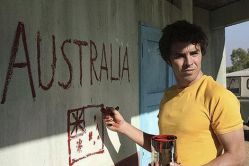 At the other end of the spectrum we have Robert Connolly's feature film The Balibo Conspiracy (pictured right), an elegant and provocative political thriller based on the real-life history of East Timor and the "Balibo Five", a group of Australian journalists who died in suspicious circumstances while covering the Indonesian invasion. Starring the ever-watchable Anthony LaPaglia (Lantana) in his habitual role of grizzled and hard-bitten cynic, Balibo was filmed on location in East Timor, giving it a visual impact that is the equal of its well-plotted narrative.
At the other end of the spectrum we have Robert Connolly's feature film The Balibo Conspiracy (pictured right), an elegant and provocative political thriller based on the real-life history of East Timor and the "Balibo Five", a group of Australian journalists who died in suspicious circumstances while covering the Indonesian invasion. Starring the ever-watchable Anthony LaPaglia (Lantana) in his habitual role of grizzled and hard-bitten cynic, Balibo was filmed on location in East Timor, giving it a visual impact that is the equal of its well-plotted narrative.
Both horror and comedy are genres in which Australia has carved something of a niche; 2005's Wolf Creek proved that an independent Australian horror film could hold its own against glossy Hollywood rivals, and Rob Sitch's comedies The Castle and The Dish quietly established an international following for uniquely Australian humour. Just as the isolated highways of the outback framed and shaped the drama of Wolf Creek, so the Tasmanian bush provides both set and antagonist for Van Dieman's Land, a period horror film based on the true story of the convict escapee Alexander Pearce.
While the central theme of cannibalism makes it more than horrific enough, I'm not sure whether the "horror" label is quite the right designation for this beautifully-shot meditation on human nature and survival. Tied to a necessarily rather repetitive plot – once you've eaten one comrade and there are six remaining the narrative arc is fairly clear – it doesn't quite fulfil its dramatic potential, but is worth seeing for its location-shot cinematography alone.
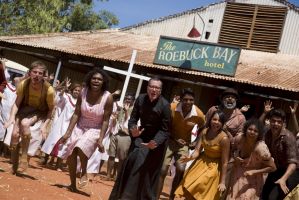 Flying the flag for comedy is Rachel Perkins' deliciously anarchic Bran Nue Dae (pictured left), adapted from a stage musical. Its largely indigenous cast romp their way through a stylised Dennis Potter-esque road-trip across 1960s Australia. An aboriginal musical whose touch is as light as its tone, the film's bubblegum fun is further enhanced by a cameo from Geoffrey Rush as the violently eccentric (and eccentrically violent) German priest Father Benedictus.
Flying the flag for comedy is Rachel Perkins' deliciously anarchic Bran Nue Dae (pictured left), adapted from a stage musical. Its largely indigenous cast romp their way through a stylised Dennis Potter-esque road-trip across 1960s Australia. An aboriginal musical whose touch is as light as its tone, the film's bubblegum fun is further enhanced by a cameo from Geoffrey Rush as the violently eccentric (and eccentrically violent) German priest Father Benedictus.
Looking at such wildly diverse features, it's hard to account for the marginal state of Australia's film industry. Screenwriter Andrew Slattery (author of the award-winning Australian crime-thriller Animal Kingdom) argues that, as with all films, it comes down to the simple question of storytelling. "Successful Australian films like Wolf Creek and Ten Canoes just tell stories, and don't obsess over ‘being Australian'. Often there seems to be a lack of big ideas in our movies, especially when compared to British hits like Calendar Girls, Hot Fuzz or Sunshine; those films all have a concept at their heart which pervades every sequence."
The producer and story-consultant Karel Segers agrees, but – like Hessey – attributes this lack to a national insecurity about cinematic identity. "Australian filmmakers have an innate aversion to anything that even smells like Hollywood, and therefore ignore simple storytelling techniques that are essential to captivating an audience. Our films have great dialogue and often good screen design but they lack cinematic story arcs." It's a debate that seems destined to simmer on for a while yet. In the meantime, if you feel like judging for yourself, LAFF 2010 is a good place to start.
Watch the trailer for Samson and Delilah below

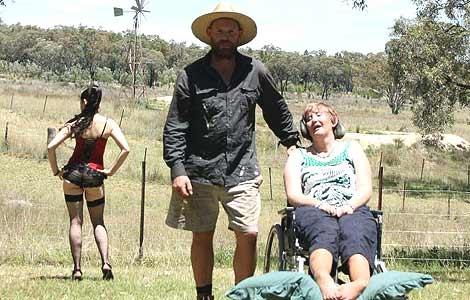











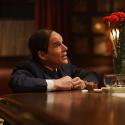
Add comment